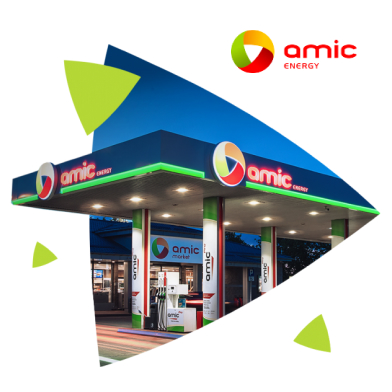![]() The Client
The Client
A consulting company
Our client is a leading provider of audit, consulting, financial, and risk advisory services, tax, and legal expertise. Their consulting division is committed to delivering top-tier financial solutions to businesses worldwide and offers strategic insights, analytics, mergers and acquisitions, and operational optimization. In Risk Advisory, the company excels in enterprise risk management, cybersecurity, regulatory compliance, and business continuity.
![]() The Project
The Project
A System for Calculating and Reporting Capital Adequacy
The project's primary goal was to elevate the existing system's capabilities, enabling more robust assessments of a bank's capital adequacy.
This involved intricate transformation and extension of data to project and model future capital adequacy across diverse scenarios
WHAT DID WE DO?
We worked to refine and optimize the data transformation mechanisms, update the solution, and restructure the data model to improve modifiability. Generally in this project, our consultant was responsible for modifying System Architecture, developing the back-end part of the system, DevOps, and Maintenance.
TEAM
1 .NET Fullstack Developer
DURATION
05.2023 – Ongoing
INDUSTRY
IT services & IT consulting
WHAT DID WE DO?
We worked to refine and optimize the data transformation mechanisms, update the solution, and restructure the data model to improve modifiability. Generally in this project, our consultant was responsible for modifying System Architecture, developing the back-end part of the system, DevOps, and Maintenance.
TEAM
1 .NET Fullstack Developer
DURATION
05.2023 – Ongoing
INDUSTRY
IT services & IT consulting
![]() Challenges
Challenges
Cooperation Goals
![]() Challenges
Challenges
Cooperation Goals
The most significant challenge was in comprehending the tool's current architecture and modifying it to meet new requirements. This demanded a deep dive into the application's core, with modifications aimed at ensuring seamless integration without disrupting existing functionalities.
Moreover, the application's capacity to handle large datasets posed an additional hurdle, calling for implementing memory-efficient solutions. Our approach involved crafting new code to align with established requirements while prioritizing efficiency. Rigorous testing using specialized memory diagnostic tools was pivotal in monitoring and optimizing memory usage.
The most significant challenge was in comprehending the tool’s current architecture and modifying it to meet new requirements. This demanded a deep dive into the application’s core, with modifications aimed at ensuring seamless integration without disrupting existing functionalities.
Moreover, the application’s capacity to handle large datasets posed an additional hurdle, calling for implementing memory-efficient solutions. Our approach involved crafting new code to align with established requirements while prioritizing efficiency. Rigorous testing using specialized memory diagnostic tools was pivotal in monitoring and optimizing memory usage.
![]() The Scope of Work
The Scope of Work
What We Did?
![]() The Scope of Work
The Scope of Work
What We Did?
A crucial first step of our work commenced with a thorough understanding of the existing mechanisms. Once we grasped the project intricacies, our initial task centered on diagnosing the causes of failure in the old integration tests linked to data transformation.
Subsequently, we formulated a task list aimed at enhancing current mechanisms to align with the new requirements. With these changes in place, our focus transitioned to developing additional functionalities for data transformation using Excel files. Throughout this process, we maintained a vigilant watch over the memory consumption of the solution.
![]() The Cooperation Process
The Cooperation Process
The Sequence of Work
Throughout the year-long collaboration with a consulting company, our programmer remained adaptable, seamlessly aligning with the project's evolving requirements. With a pivotal role in back-end development, DevOps, and maintenance tasks, our programmer ensured the continuous advancement of the system's development.
In the initial phase of cooperation, a software development expert from Prognetics took charge of designing the architecture for the new solution. Subsequently, the focus shifted to leading all aspects of feature development, encompassing rigorous testing aimed at evaluating memory usage and time performance.
Throughout the year-long collaboration with a consulting company, our programmer remained adaptable, seamlessly aligning with the project's evolving requirements. With a pivotal role in back-end development, DevOps, and maintenance tasks, our programmer ensured the continuous advancement of the system's development.
In the initial phase of cooperation, a software development expert from Prognetics took charge of designing the architecture for the new solution. Subsequently, the focus shifted to leading all aspects of feature development, encompassing rigorous testing aimed at evaluating memory usage and time performance.
![]() The Results
The Results
Summary of the Project
Our collaboration concluded following the analysis and planning phase, spread over 2 months. During this time, we delivered the following key outcomes to the client:
As a result of our consultant’s efforts, several key features were integrated into the system, enhancing its functionality and usability.
New options for data transformations were implemented, offering users increased flexibility and efficiency in manipulating data to meet their specific needs.
The ability to save transformed data directly within the application was introduced, streamlining workflows and facilitating seamless data management
Significant improvements were made to the user interface, enhancing its intuitiveness and overall user experience.
The application is capable of processing several million data points, subjecting them to multiple transformations. Memory consumption remains consistent before each transformation, indicating the absence of memory leaks.
![]() Case studies
Case studies
Other Prognetics projects
#BusinessAnalysis #SoftwareArchitecture
Comprehensive analysis to unravel payment complexities and implement cashless solutions for AMIC, a leading gas station network in Poland.

#TeamAugmentation #SoftwareArchitecture #CustomDevelopment #Back-end #DevOps #Maintenance
We collaborated with Deloitte to enhance their system for assessing capital adequacy. Our consultant focused on system architecture, custom development, backend operations, and maintenance.
Development of an application for planning holiday sightseeing
#UX/UI #SoftwareArchitecture #MobileDevelopment
Creating a mobile application to create sightseeing plans for the most frequently visited cities in the world.
#BusinessAnalysis #SoftwareArchitecture
Comprehensive analysis to unravel payment complexities and implement cashless solutions for AMIC, a leading gas station network in Poland.
#TeamAugmentation #SoftwareArchitecture #CustomDevelopment #Back-end #DevOps #Maintenance
We collaborated with Deloitte to enhance their system for assessing capital adequacy. Our consultant focused on system architecture, custom development, backend operations, and maintenance.
#UX/UI #SoftwareArchitecture #MobileDevelopment
Creating a mobile application to create sightseeing plans for the most frequently visited cities in the world.


